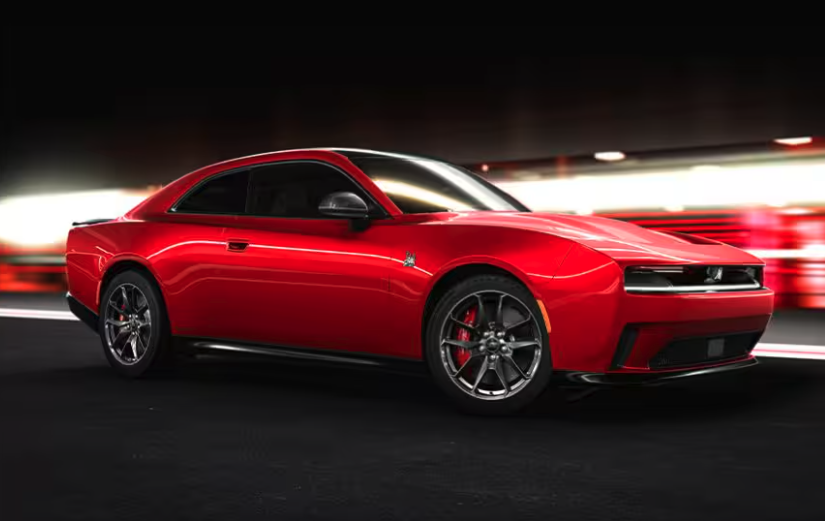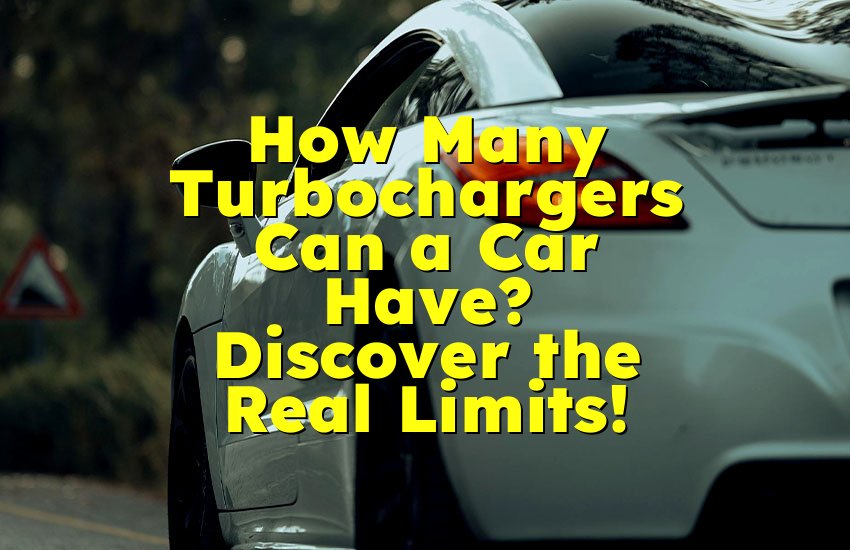As an Amazon Associate, I earn from qualifying purchases at no extra cost to you.
Car Revving On Its Own When Stationary: Unveiling the Strange Phenomenon
A car revving on its own when stationary can be a sign of a faulty idle air control valve or a vacuum leak. This issue can cause the engine to surge and rev up unexpectedly while the car is not in motion.
Experiencing a car revving on its own while stationary can be a concerning and potentially dangerous issue for drivers. It can be caused by various factors, including a malfunctioning idle air control valve or a vacuum leak. Addressing the problem promptly is crucial to prevent further damage to the vehicle and ensure safety on the road.
We will explore the potential causes of a car revving on its own when idle, the possible implications of this issue, and the necessary steps to diagnose and resolve the problem effectively. Whether you’re a car owner experiencing this issue or a mechanic looking to expand your knowledge, this guide will provide valuable insights to address this concern.

Credit: www.landmarkdodgechryslerjeep.net
Causes Of Unintended Revving
When a car revs on its own while stationary, it can be a worrisome and potentially dangerous issue. Understanding the causes of unintended revving is crucial in identifying and resolving the problem. Let’s explore some common reasons why a car might rev on its own when sitting idle.
Faulty Throttle Position Sensor
A faulty throttle position sensor can cause the engine to rev on its own when the car is stationary. This crucial component communicates with the vehicle’s engine control unit (ECU) to determine the position of the throttle. When the sensor malfunctions, it may send incorrect signals to the ECU, leading to erratic engine behavior, including unintended revving.
Vacuum Leaks
Vacuum leaks can also contribute to a car revving on its own while not in motion. When a vacuum leak occurs, unmetered air enters the engine, disrupting the air-to-fuel ratio and leading to irregular engine performance. This can manifest as the engine revving unexpectedly even when the car is stationary.

Credit: www.nytimes.com
Impact On The Vehicle
When a car starts revving on its own while stationary, it can have a significant impact on the vehicle, leading to potential engine degradation and fuel efficiency issues.
Engine Degradation
A car revving on its own when stationary can cause substantial engine degradation. Continuous and abrupt revving can put excessive strain on the engine components, causing premature wear and tear. This can lead to reduced engine performance, increased maintenance costs, and a shorter overall lifespan of the engine. The consistent strain on the engine can also lead to overheating and damage to essential parts.
Fuel Efficiency Issues
When a car revs on its own while stationary, it can result in fuel efficiency issues. Excessive and unnecessary revving can lead to an increased consumption of fuel, resulting in poor mileage. This not only leads to higher fuel expenses for the vehicle owner but also contributes to environmental pollution due to increased emissions. Moreover, the strain on the engine due to continuous revving can also disrupt the air-fuel ratio, affecting the overall fuel efficiency.
Safety Concerns
Cars revving on their own when stationary pose serious safety risks that drivers must be aware of.
Risk Of Unintended Acceleration
Unintended acceleration can lead to loss of control over the vehicle, endangering the driver, passengers, and pedestrians.
Potential For Accidents
The potential for accidents increases significantly when a car revs on its own, especially in crowded areas.
Diagnosing The Issue
If your car is revving on its own when stationary, it could be a sign of a potential issue with the throttle system, idle control valve, or a vacuum leak. To diagnose the problem, a qualified mechanic can conduct a thorough inspection of the engine and its components to pinpoint the underlying cause and recommend necessary repairs.
When your car revs on its own when stationary, it’s crucial to diagnose the issue promptly to prevent any further damage to your vehicle. Ignoring this seemingly minor problem can lead to more significant engine issues down the road. In this section, we will explore two effective methods to diagnose the underlying cause of your car’s self-revving behavior. By utilizing an OBD-II scanner analysis and inspecting engine components, you can identify the root cause and take appropriate action to resolve the issue.
Obd-ii Scanner Analysis
One of the first steps in diagnosing the issue is to perform an OBD-II scanner analysis. The On-Board Diagnostic (OBD-II) system is a standard feature in most modern vehicles that allows you to retrieve diagnostic trouble codes (DTCs). These codes provide valuable insights into the specific problem areas within your car’s engine. To conduct an OBD-II scanner analysis, follow these simple steps:
- Locate the OBD-II port in your vehicle – typically found under the dashboard, near the steering column.
- Connect the OBD-II scanner to the port, ensuring a secure connection.
- Turn on the ignition without starting the engine.
- Allow the scanner to communicate with your vehicle’s computer system.
- Once the connection is established, scan for any stored trouble codes.
- Write down the codes displayed on the scanner for further analysis and potential repairs.
An OBD-II scanner analysis provides you with valuable information, narrowing down the potential causes of your car’s self-revving issue. Use these codes as a starting point for further investigation.
Inspecting Engine Components
Another effective method to diagnose the self-revving issue is by inspecting specific engine components. This visual examination can help identify any visible problems that might be contributing to the unexpected revving. Follow these steps for a thorough inspection:
- Open the hood and ensure the engine is off and cool.
- Visually examine the throttle body for any signs of debris or dirt accumulation.
- Inspect the throttle cable and ensure it is properly attached and not frayed.
- Check the idle control valve for any signs of damage or clogging.
- Inspect the accelerator cable for any issues such as looseness or damage.
- Examine the intake manifold gasket for any leaks or wear.
By thoroughly inspecting these engine components, you can identify any obvious issues that may be causing your car’s self-revving behavior.
Preventive Measures
Experiencing a car revving on its own when stationary can be a concerning and potentially dangerous situation. To avoid any safety hazards and prevent further engine damage, it is crucial to take preventive measures. By following these simple but effective steps, you can ensure the smooth operation of your vehicle.
Regular Maintenance Checks
Regular maintenance checks play a vital role in detecting and resolving potential issues before they escalate. By adhering to a set maintenance schedule, you can significantly reduce the risk of your car revving on its own when stationary. Here are some key maintenance tasks to include:
- Engine Tune-Up: Regular tune-ups help maintain optimal engine performance and prevent any irregular revving. Schedule tune-ups according to your vehicle manufacturer’s recommendations or consult a qualified mechanic.
- Throttle Body Cleaning: A clogged or dirty throttle body can affect the engine’s idle speed and lead to unwanted revving. Ensure the throttle body is cleaned at regular intervals to prevent this issue.
- Fuel System Inspection: A comprehensive inspection of the fuel system, including the fuel injectors, fuel pressure regulator, and fuel filter, can help identify any issues that may cause erratic revving. If necessary, clean or replace these components.
- Spark Plug Replacement: Worn or faulty spark plugs can disrupt engine combustion, resulting in abnormal revving. Replace the spark plugs as recommended by your vehicle’s manufacturer to ensure optimal engine performance.
Addressing Issues Promptly
Dealing with any car-related issues promptly can save you from larger and costlier problems later on. If you notice your car revving on its own when stationary, take immediate action and address the issue using the following steps:
- Scan for Error Codes: Use an OBD-II scanner to check for any stored error codes in your vehicle’s computer system. These codes can provide valuable insights and help pinpoint the root cause of the problem.
- Check for Vacuum Leaks: Vacuum leaks can disrupt the engine’s idle and cause unwanted revving. Inspect the vacuum hoses and connections for cracks or disconnections, ensuring they are secure and intact.
- Inspect the Idle Control Valve: A malfunctioning idle control valve can contribute to irregular revving. Clean or replace the idle control valve if necessary to restore proper engine idle operation.
- Consult a Professional: If you are unable to diagnose or resolve the issue on your own, it is recommended to consult a qualified mechanic. They have the expertise and diagnostic tools to identify and address car revving problems effectively.
By being proactive and diligent in your maintenance checks and promptly addressing any issues, you can maintain a smooth and stable idle for your vehicle. Remember, timely preventive measures are key to enjoy a trouble-free driving experience.
Expert Insights
Understanding the phenomenon of a car revving on its own when stationary requires insights from both mechanics and industry professionals. Let’s delve into their recommendations and perspectives below.
Mechanic’s Recommendations
- Check for any vacuum leaks in the intake system.
- Inspect the throttle body and clean if necessary.
- Scan the vehicle’s computer for any error codes.
- Ensure the idle air control valve is functioning correctly.
Industry Perspectives
Industry experts shed light on the potential causes of a car revving on its own:
| Cause | Explanation |
|---|---|
| Faulty Throttle Position Sensor | Can lead to erratic engine behavior. |
| Dirty Mass Airflow Sensor | May cause incorrect air/fuel mixture. |

Credit: www.theguardian.com
Conclusion
If your car revs unexpectedly, check for underlying issues causing the problem. Seeking professional help can prevent further damage and ensure your safety. Stay informed on vehicle maintenance to avoid such surprises and maintain a smooth driving experience. Addressing car issues promptly is crucial for optimal performance and longevity.











